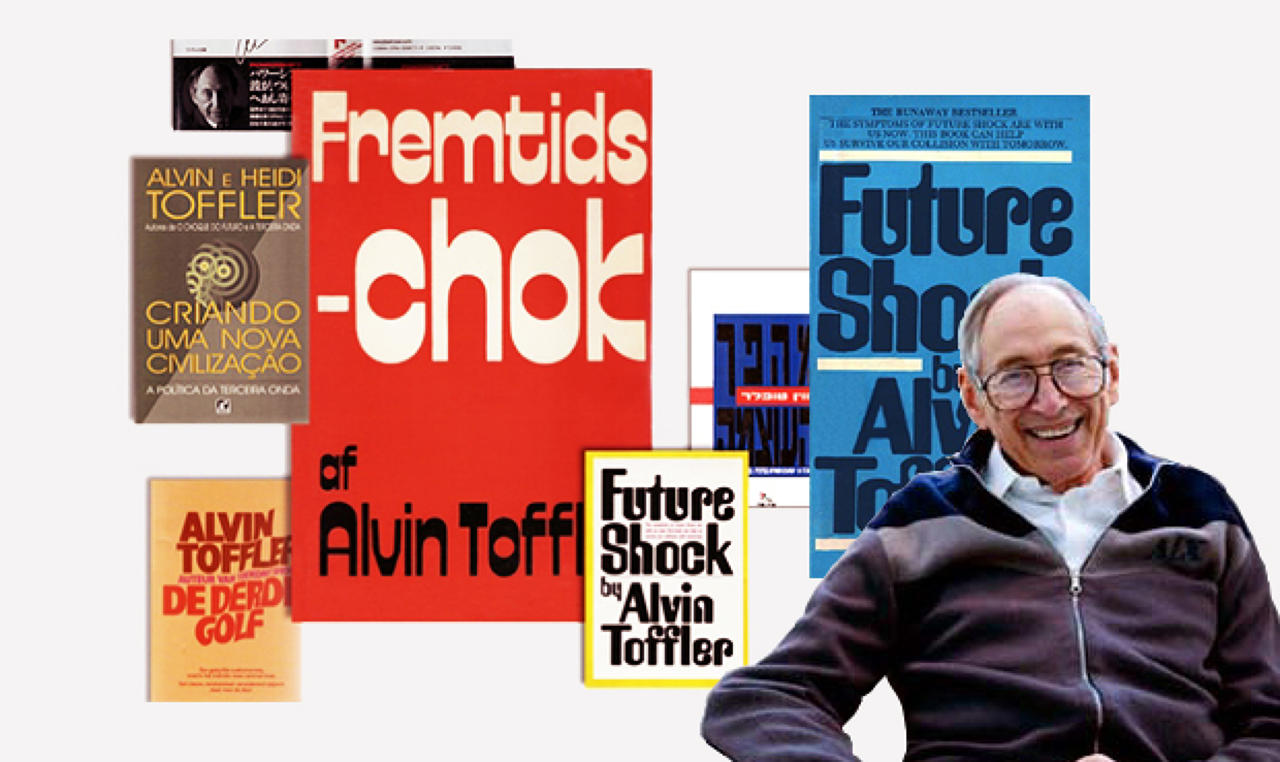
Channeling Toffler – Futuring Conferences and Trade Shows
Virtual conferences have become the way people meet and communicate under the current stay safe at home lockdown. Looking to the future, it has the potential to change the format of trade shows and conferences.
What is the origin of the virtual conference?
According to Wikipedia, “[t]he “virtual tradeshow” was first publicly described and presented as “ConventionView” by Alan Saperstein and Randy Selman of Visual Data Corporation now known as Onstream Media in April 1993 in a presentation to investors at the Waldorf Astoria hotel in New York city (sic).”
For me, it was a term heard first from noted futurist, the late Alvin Toffler.
We were working with him on a future focused business in the late 90s then called FutureNet. I was honored to be offered a role as the start up’s first CFO.
That engagement and the direct interface with Mr. Toffler has had a long term and profound influence on us.
You can read more about Mr. Toffler and our thoughts about him in UPPER CASE AL: LOOKING TO THE FUTURE, a memoir published shortly after his passing a few years ago.
The past few months has seen a significant upswing in virtual conferences, as in-person events have been cancelled or postponed. These virtual conferences go way beyond Zoom type of meetings, business or social, as companies and entrepreneurs have been faced with not having direct contact with prospective customers and are seeking a way to market their products and services to the widest audience possible, as enabled by traditional trade shows.
It is not that the technology is new, as it grew in parallel with the growth of PCs. Webcams became popular in the early days of PCs and soon were replaced by cameras built into laptops. Today they are ubiquitous. Remote guests on various TV shows, currently and pre-pandemic, have used a combination of the built-in models as well as more professional models accompanied by improved lighting.
Better quality audio also evolved, from both internal and external speakers and the use of noise cancelling and traditional headsets, to professional microphones, to enable better sound recording.
Webinars and group conference calling with video have seen dramatic increases in use over the past many years, as companies promote their products with online videos and collateral material.
Now the virtual trade show and conference is being staged in one place under one umbrella with all the vendors, panels and other presentations easily accessible.
NABShow, for example, a show generally attended by 80 – 100,000 each April, was cancelled this year. Over the past few weeks, NABShow has produced many of the panels virtually that were going to be part of the in-person conference.
While that is not unique to many of us who regularly attend webinars and watch product demos online, the NABShow has added significant content to keep its attendees connected. This includes virtual exhibitor events, product announcements, access to exhibitor collateral and more – just like the “in- person” show, but virtually.
In fact, by requiring a log in, the show, and in turn the many exhibitors, are able to know who visited their exhibition pages and attended the webinars. It may result in better, more targeted data about prospective customers than what the in-person events provide.
Other industries have created virtual trade shows, and looking to the future, more will do so. The trade shows business is a highly competitive thin profit margin business. Inducing attendees to pay for travel and admission is not easy and will be more difficult in light of the pandemic.
Creative executives and out-of-the box thinkers will continue to enhance their virtual trade shows and conferences as a means of reaching their audiences, while seeking the hook to entice viewership and attendees that ultimately become buyers. Those innovations may make the difference between success and failure.
It may enable them to reach a larger audience until such time as prospective attendees are comfortable with travelling and being in crowded situations. Some conferences may determine that remaining online is the preferred model. Comfort level is a deeply personal choice at this time and will likely remain so for the foreseeable future.
The question remains as to what will transpire with trade shows and conferences once the US and the global economy are fully functioning again. Many aspects of the virtual show will remain in place, supplementing the in-person convention center conference.
There will be wrinkles to work out by each show in the future, both for virtual and in-person events. And new concepts will evolve over time. Nevertheless, much of this is just the way Toffler predicted and envisioned it being, 20+ years later.
© The Shindler Perspective, Inc. 2020


